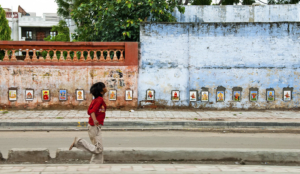5 Facts About Child Homelessness in India

Economic growth and expansion over the past few decades are responsible for India’s rank as one of the world’s fastest-growing economies. India’s strong democracy coupled with its expanding international relationships places the nation in the top three economies that the world projects to possess the most economic power in 10-15 years’ time. Ironically, India also leads the world in high rates of child homelessness. Although current data in this regard is unavailable, a 1994 report by UNICEF estimates 11 million children on India’s streets. The Indian Embassy estimates that “in Delhi alone,” at least 100,000 children live on the streets. Given the population increase of 945.6 million to 1.39 billion from 1994 to 2021, one can widely presume that the prevalence of child homelessness in India has also grown substantially.
5 Facts About Child Homelessness in India
Although many recognize child homelessness as an issue that greatly impacts India, few know why these numbers are so high and the consequences that stem from it. In order to better comprehend the epidemic of child homelessness in India, it is important to first understand the factors contributing to this continued rise and the impacts stemming from this issue.
- The majority of children living on the streets of India are escaping abuse. India’s rates of child abuse are some of the highest globally. A study from 2020 notes that children younger than 18 make up 37% of India’s population. Roughly 53% of these children reported experiencing various types of abuse. Many children in India already lack access to proper nutrition, education and medical services. These conditions in tandem with family violence urge children to seek better lives for themselves, often away from home and on the streets of large nearby cities.
- Most homeless children in India work street jobs to provide for themselves. Young boys and girls can typically find work doing small jobs. “A former street kid,” Satender Sharma, who now serves as a tourist guide for the Salaam Baalak Trust, tells NPR that common jobs consist of working at fruit stands, shining shoes, cleaning cars and selling miscellaneous items. Sharma considers actions like pick-pocketing and begging as a form of work sometimes essential for the survival of boys living on the streets.
- Children living on the streets face a plethora of safety concerns. While leaving home is often the last resort in escaping an abusive household, homeless children still encounter many hazards on the streets. On a daily basis, children fight for their survival, facing “poverty, abuse and exploitation.” Girls living on the street are particularly vulnerable to human trafficking and prostitution rings. Although the money children earn can certainly add up over time, most spend it immediately, fearing that others will steal the money. Because children are often able to seek meals at local shelters and temples, they often spend this money on “drugs or other expenses” that drive them deeper into the cycle of poverty.
- Rates of death on the streets of India average more than 10 per day in large cities like Delhi. A 2010 study reports an average of 306.25 deaths a month on the streets of Delhi alone — mostly women and children. Factors contributing to this high death toll include extreme weather patterns, malnutrition and a lack of proper sanitation. Most often, these factors impact young children most harshly. These statistics, although high, do not account for homeless people who friends and other acquaintances bury or cremate.
- Railway Children addresses child homelessness in India. Railway Children is a United Kingdom-based organization that operates with the belief that no child should have to endure life on the streets. In India, the organization visits railway stations, aiming “to reach vulnerable children as soon as they arrive on the platform and intervene before an abuser can.” The organization “provide[s] food, shelter, safety and support” but also commits to long-term solutions “so children never go back to the streets.” Railway Children aims for transformation by working with communities to raise awareness of the issues street children face and garner community support in protecting them. The organization also lobby’s the government to create change on a legislative level, ensuring policies protect the rights of all children, especially street children. In 2018 alone, Railway Children was able to reach and support 8,338 children in India. The donations to Railway Children go toward efforts on “outreach, shelter, reintegration, influencing and raising more funds.”
Moving Forward
As the population continues to grow, the rate of child homelessness in India can expect to grow too. However, while it is important to recognize the severity of child homelessness in the country, it is just as crucial to understand the ways in which varying groups are already mobilizing to tackle this issue. These five facts stand as a first step in educating people on the issue of child homelessness in India with the hopes that a broader awareness will lead to expanded interest and a desire to respond.
– Chloe D’Hers
Photo: Flickr
